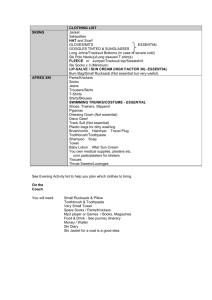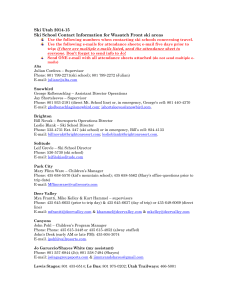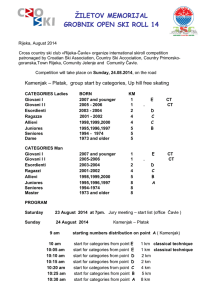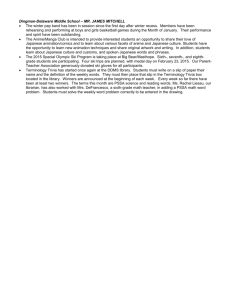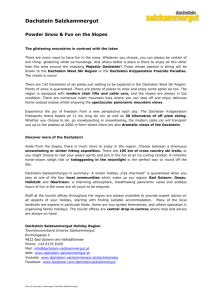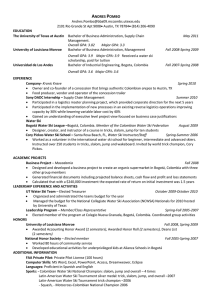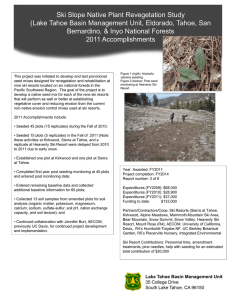Youth: Needs Assessment - Peter Redvers-lee
advertisement
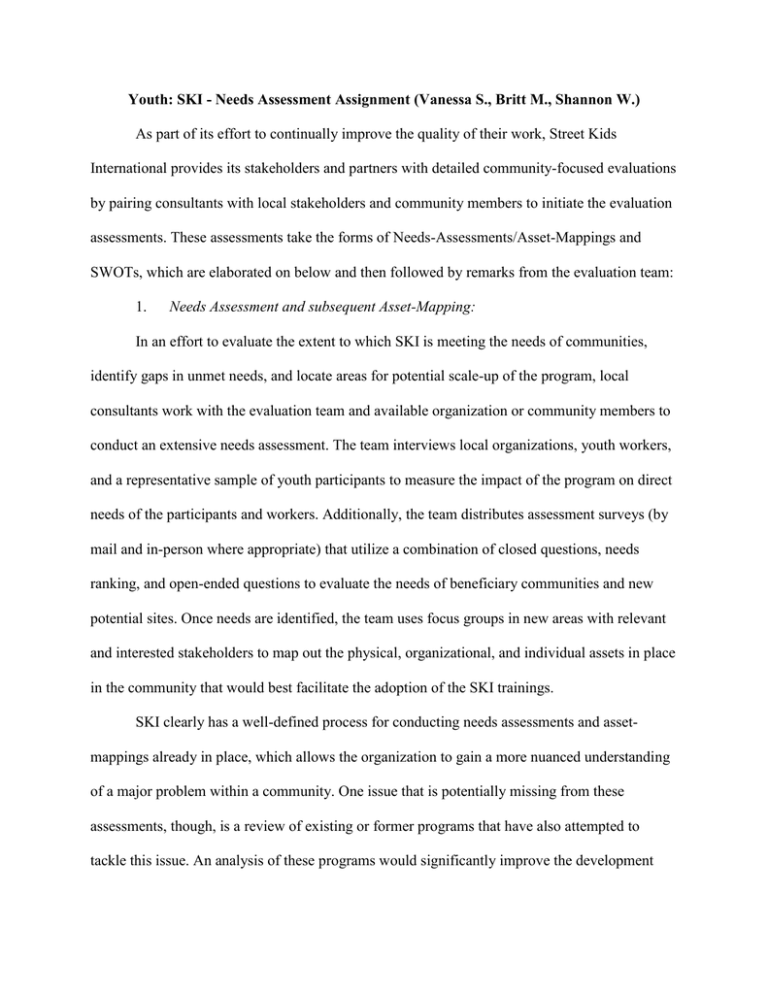
Youth: SKI - Needs Assessment Assignment (Vanessa S., Britt M., Shannon W.) As part of its effort to continually improve the quality of their work, Street Kids International provides its stakeholders and partners with detailed community-focused evaluations by pairing consultants with local stakeholders and community members to initiate the evaluation assessments. These assessments take the forms of Needs-Assessments/Asset-Mappings and SWOTs, which are elaborated on below and then followed by remarks from the evaluation team: 1. Needs Assessment and subsequent Asset-Mapping: In an effort to evaluate the extent to which SKI is meeting the needs of communities, identify gaps in unmet needs, and locate areas for potential scale-up of the program, local consultants work with the evaluation team and available organization or community members to conduct an extensive needs assessment. The team interviews local organizations, youth workers, and a representative sample of youth participants to measure the impact of the program on direct needs of the participants and workers. Additionally, the team distributes assessment surveys (by mail and in-person where appropriate) that utilize a combination of closed questions, needs ranking, and open-ended questions to evaluate the needs of beneficiary communities and new potential sites. Once needs are identified, the team uses focus groups in new areas with relevant and interested stakeholders to map out the physical, organizational, and individual assets in place in the community that would best facilitate the adoption of the SKI trainings. SKI clearly has a well-defined process for conducting needs assessments and assetmappings already in place, which allows the organization to gain a more nuanced understanding of a major problem within a community. One issue that is potentially missing from these assessments, though, is a review of existing or former programs that have also attempted to tackle this issue. An analysis of these programs would significantly improve the development and implementation of a program run by SKI, as it would allow SKI to learn from and avoid past mistakes while gaining a better historical and contextual basis within an individual community (though perhaps this was already accomplished before a needs-assessment was carried out). 2. SWOT Analysis SKI also implements SWOT analyses, which provide it with a clear idea of the perceived benefits and limitations of their programs at multiple levels, as well as potential pathways to improvement or barriers to success. The evaluation team involves key and interested stakeholders at the youth, worker, organizational, and international level to identify said perceived strengths and weaknesses according to these groups of participants and stakeholders. A possible SWOT analysis chart is illustrated below and filled in with responses one might expect to see for an organization like SKI. Strengths Weaknesses •Sustainable training model focused on tangible skills for youth capacity •Utilizes local partners/resources •Encompasses a wide reach of youth •Models/methodology externally imposed •Targeting -Participants may be drawn from those already participating in local org activities, thus doubly benefit. •Potential exclusion of marginalized youth •Local youth workers/orgs overburdened •Self-selection bias from participants Opportunities Threats/Constraints •Expand to middle-large business entrepreneurship •Work with schools to get education access to street youth •Costs of maintaining mentorships •Negative attitudes/cultural views toward street children •Employers willing to hire these workers? •Level of income possibly limited Results of the needs assessments and SWOT analysis would be compiled and analyzed by the lead consultant, who would share the findings with SKI, participants, and interested stakeholders to recommend best moves forward with the evaluation design.

